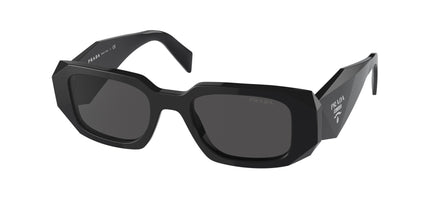Understanding Thyroid Eye Disease

Welcome to an in-depth exploration of Thyroid Eye Disease (TED). This condition not only impacts the thyroid gland but also has significant eye effects. Thyroid Eye Disease is part of a broader category of autoimmune diseases that can affect various parts of the body, including the eyes, by causing the immune system to attack the thyroid. In this post we’ll go over what constitutes Thyroid Eye Disease as well as its relationship to Graves’ disease, symptoms to look out for and the various treatment options - from lifestyle adjustments to surgical interventions available. Whether newly diagnosed, suspecting you might have TED or simply looking to gain greater insights, this guide will tell you all about it.
What Is Thyroid Eye Disease?
Thyroid Eye Disease, also known as Graves’ Eye Disease or thyroid-associated ophthalmopathy, is an autoimmune condition where the immune system mistakenly attacks the tissues around the eyes. This attack leads to inflammation and swelling, causing noticeable changes and discomfort in the eyes. It’s most commonly associated with Graves’ disease, an autoimmune disorder that leads to overactivity of the thyroid gland (hyperthyroidism). TED is a prevalent condition in people with autoimmune thyroid diseases, emphasizing that Graves' disease is one of the leading causes of Thyroid Eye Disease.
The Relation of Thyroid Function and Eye Health
Thyroid function plays an integral part in overall wellness, including eye health. Thyroid hormones regulate metabolism as well as numerous organs and tissues including those surrounding your eyes - in cases of thyroid eye disease (TED), however, immune cells attack certain eye muscles or fatty tissue within the eye socket causing the characteristic symptoms associated with the disease.
Common Symptoms of Thyroid Eye Disease
Recognizing the symptoms of Thyroid Eye Disease is key to early diagnosis and treatment. Common signs include:
-
Bulging Eyes (Proptosis): One of the most striking symptoms of TED is the apparent bulging of the eyes, caused by swelling of the tissues behind the eyeball.
-
Double Vision: Swelling and dysfunction of the eye muscles can lead to alignment issues, causing double vision, or diplopia.
-
Eye Pain and Pressure: As pressure builds within the eye socket due to increased tissue mass, it can lead to discomfort and pain.
-
Redness and Swelling: Inflammatory responses can make the eyes appear red and puffy.
-
Vision Changes: In severe cases, the pressure on the optic nerve may lead to partial vision loss.
Diagnosing Thyroid Eye Disease
Diagnosis of TED involves a combination of clinical examination, imaging, and thyroid function tests. Doctors typically look for the hallmark signs of the disease, supported by blood tests to evaluate thyroid hormone levels and imaging tests like magnetic resonance imaging (MRI) to view the extent of tissue involvement around the eyes.
Treatment Options for Managing Thyroid Eye Disease
Medical Treatments
-
Steroids and Anti-inflammatory Medication: To reduce inflammation, doctors often prescribe corticosteroids. In some cases, other immunosuppressants may be required to manage severe inflammation.
-
Selenium Supplements: Studies have shown that selenium can help reduce the severity of mild TED.
-
Radioactive Iodine Therapy: Used to treat overactive thyroid conditions associated with TED, though it may sometimes worsen eye symptoms.
Surgical Treatments
-
Orbital Decompression Surgery: In cases where there's significant risk to vision or severe bulging, this surgery involves removing bone from the eye socket to allow more space for swollen tissues.
-
Eyelid Surgery: To correct eyelid retraction that exposes too much of the eye surface.
-
Eye Muscle Surgery: To address double vision by correcting misaligned eye muscles.
Lifestyle Adjustments
-
Managing Dry Eyes: Using artificial tears and ointments can help relieve symptoms of dryness and irritation.
-
Smoking Cessation: Smoking can exacerbate symptoms and progression of TED.
-
Protective Eyewear: Wearing sunglasses can help protect the eyes from UV rays and airborne irritants.
Living with Thyroid Eye Disease
Living with TED can be challenging, but understanding the disease and collaborating with a knowledgeable healthcare team can greatly improve quality of life. Regular follow-ups, consistent treatment regimens, and lifestyle adjustments play critical roles in managing the condition.
Taking Control of Your Health
Managing Thyroid Eye Disease effectively requires proactive steps and informed health choices. For anyone living with TED, or even those without it but looking to protect their eye health, consider investing in high-quality eyewear from Designer Optics. They offer a range of glasses that can help shield your eyes from environmental factors, potentially easing symptoms and providing daily protection. Early intervention, combined with the right eye care accessories, can make a significant difference in maintaining both eye health and overall well-being.















 Back to Blog Page
Back to Blog Page











